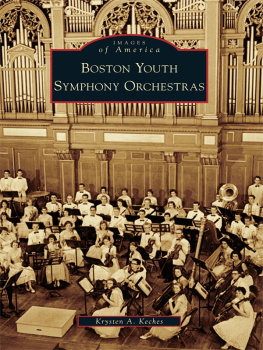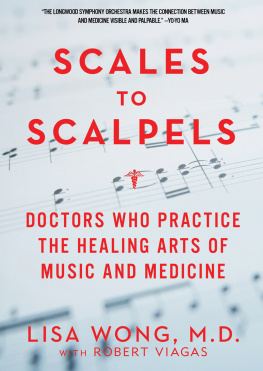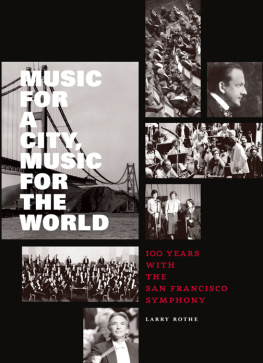Ganson Paul - The Detroit Symphony Orchestra : grace, grit, and glory
Here you can read online Ganson Paul - The Detroit Symphony Orchestra : grace, grit, and glory full text of the book (entire story) in english for free. Download pdf and epub, get meaning, cover and reviews about this ebook. City: Detroit (Mich.), Michigan--Detroit., year: 2016, publisher: Painted Turtle, genre: Home and family. Description of the work, (preface) as well as reviews are available. Best literature library LitArk.com created for fans of good reading and offers a wide selection of genres:
Romance novel
Science fiction
Adventure
Detective
Science
History
Home and family
Prose
Art
Politics
Computer
Non-fiction
Religion
Business
Children
Humor
Choose a favorite category and find really read worthwhile books. Enjoy immersion in the world of imagination, feel the emotions of the characters or learn something new for yourself, make an fascinating discovery.
- Book:The Detroit Symphony Orchestra : grace, grit, and glory
- Author:
- Publisher:Painted Turtle
- Genre:
- Year:2016
- City:Detroit (Mich.), Michigan--Detroit.
- Rating:5 / 5
- Favourites:Add to favourites
- Your mark:
- 100
- 1
- 2
- 3
- 4
- 5
The Detroit Symphony Orchestra : grace, grit, and glory: summary, description and annotation
We offer to read an annotation, description, summary or preface (depends on what the author of the book "The Detroit Symphony Orchestra : grace, grit, and glory" wrote himself). If you haven't found the necessary information about the book — write in the comments, we will try to find it.
Ganson Paul: author's other books
Who wrote The Detroit Symphony Orchestra : grace, grit, and glory? Find out the surname, the name of the author of the book and a list of all author's works by series.
The Detroit Symphony Orchestra : grace, grit, and glory — read online for free the complete book (whole text) full work
Below is the text of the book, divided by pages. System saving the place of the last page read, allows you to conveniently read the book "The Detroit Symphony Orchestra : grace, grit, and glory" online for free, without having to search again every time where you left off. Put a bookmark, and you can go to the page where you finished reading at any time.
Font size:
Interval:
Bookmark:


2016 by Wayne State University Press,
Detroit, Michigan 48201.
All rights reserved. No part of this book may be reproduced without formal permission. Manufactured in the United States of America.
20 19 18 17 16 5 4 3 2 1
ISBN 978-0-8143-3136-1 (jacketed cloth)
ISBN 978-0-8143-4062-2 (e-book)
Library of Congress Control Number:
2016932279

Designed and typeset by Bryce Schimanski
Composed in Adobe Garamond Pro
Painted Turtle is an imprint of
Wayne State University Press
Wayne State University Press
Leonard N. Simons Building
4809 Woodward Avenue
Detroit, Michigan 48201-1309
Visit us online at wsupress.wayne.edu

We gratefully acknowledge Gwen and Richard Bowlby, longtime patrons and tireless supporters of the Detroit Symphony Orchestra and Wayne State University Press, whose generous gift has made possible both the publication of this volume and a partial matching gift from the Community Foundation of Southeast Michigan.
Contents
Preface
THE DETROIT SYMPHONY ORCHESTRA BEGAN IN 1887 AS A RATHER small ensemble of around thirty-five players in a city that was just emerging as an industrial power. From that time to the present, the two entitiesthe city and its orchestrahave grown and prospered, making their mark on a national scale, in musical artistry for the symphony, and in economic might for the city. But they have each faced crises as wellfinancial, social, and culturalthat have forced the DSO out of existence three times, and the city to the brink of dissolution.
Yet in the face of adversity, they have revived, and thrived. How did it happen, and what does it mean for the future of the orchestra and the city?
The Detroit Symphony Orchestra: Grace, Grit, and Glory offers a perspective on this shared story. It describes and documents the history of the DSO through the prism of the history of the city it has called home for nearly 130 years. It details the orchestras cycle of growth, glory, collapse, and renewal in light of the citys own dynamic economic, demographic, and cultural changes.
This book also provides a perspective on the DSO in the context of the history of the American symphony orchestra, from the nineteenth century to the present, from the Make America Musical movement and Theodore Thomas in the 1870s to the current economic and cultural crises that have threatened the viability of many modern symphony orchestras today, including the DSO.
It is a story that builds on the work of others, most importantly the history of the symphony that was written in 1964 by Edith Rhetts Tilton. The former Educational Director for the DSO, and the first person to hold that title for an American orchestra, she had been brought to Detroit in the 1920s by Ossip Gabrilowitsch, one of the finest and most important music directors in the orchestras history, who led the DSO during its first Golden Age.
Tiltons importance to the DSO and Detroit cannot be overemphasized. She forged relationships first with the public and parochial schools of the city, then with the state of Michigan that established music education in curriculums statewide. She brought classical music, played by the DSO, into classrooms throughout Detroit, introducing studentsand their parentsto music, helping to realize Gabrilowitschs mission to reach out to the community, share the beauty of classical music, and build knowledgeable listeners and supporters for the orchestra.
Yet Tiltons history, published in 1964, was written to celebrate the fiftieth anniversary of the DSOs founding, which at that time was acknowledged as the ensemble that began in 1914 under the baton of Weston Gales. And while that date was long accepted as the establishment of the first Detroit Symphony, subsequent research suggests a longer, richer history.
For the purposes of this book, we suggest that the history of the orchestra begins twenty-seven years earlier, with the first ensemble to call itself the Detroit Symphony Orchestra, in 1887. Thus the history of the founding of that first DSO, and the history of what led up to its creation, needed to be documented and explored, and that is how we begin this study. So, too, did the subsequent fifty years, from 1964 to the present, need to be examined to fully understand the context of the changing fortunes of the DSO. Throughout, our purpose has been to chart the full history of the DSOthe musicians, the music directors, the management, and the boardsas they sought for musical excellence, and the consistent funding and leadership to achieve it, in the changing economic and cultural landscape of Detroit.
We envision that the audience for this history is made up of the general reading public, non-professionals who nonetheless are current and past supporters of the DSO, as well as people interested in Michigan history, music, and the background of one of the oldest cultural institutions in Detroit. That means that the language used throughout the book to describe the music and the workings of the orchestra has been chosen with a general audience in mind.
A work such as this could never have been accomplished without the help of many individuals, and I will try to list them all here, and to acknowledge their contributions to the project.
First, I would like to thank Paul Ganson, longtime Assistant Principal Bassoon with the DSO, who was an integral part of launching this project, who worked tirelessly to save Orchestra Hall, and whose wit and wisdom inform this book.
Next, I would like to thank the librarians of the Detroit Public Library Main Branch, especially Jo Ann Poske and Cully Sommers of the Music, Art, and Literature Department. They provided me with original programs from the earliest DSO to the present, as well as scrapbooks containing some of the only surviving copies of the earliest reviews of that first ensemble. They also gave me access to the unpublished masters thesis of Lynne Marie Mattson, which, along with Tiltons history, represents only the second history of the DSO covering the period from 1914 to 1964. Additionally, they made available the online databases of the DPL that contain some newspaper holdings dating back to the nineteenth century, which, while incomplete due to lack of funding, offered at least a place to start for this research.
Also at the Main Branch, the staff of the Burton Historical Collection was of crucial importance to the research for this book, including Mark Bowden, Coordinator of Special Collections, as well as Assistant Manager for Special Collections Romie Minor and Archivist Dawn Eurich. Through them, I was able to read the earliest physical evidence of the DSO, the ledgers of Fritz Kalsow, and to hold in my hand the documents establishing the Symphony Society and Orchestra Hall.
A portion of the DSO Archive is now housed at the Walter Reuther Library at Wayne State University, and the staff of the Reading Room, especially Reference Archivist Kristen Chinery, was always helpful to me as I researched the collection, which offers resources especially pertinent to the study of labor relations and financial information from the period 1950 to 1986.
The DSO Archive, containing thousands of pieces and compiled from over 100 years of materials donated to or purchased by the orchestra, was for many years under the superb direction of Archivist Cynthia Korolov. Although Cynthia is no longer part of the organization, she was my sure and unfailingly helpful guide to the contents of the Archive, and was especially important in finding the many photos that illustrate the text. Her contributions were crucial to making this book what it is.
Next pageFont size:
Interval:
Bookmark:
Similar books «The Detroit Symphony Orchestra : grace, grit, and glory»
Look at similar books to The Detroit Symphony Orchestra : grace, grit, and glory. We have selected literature similar in name and meaning in the hope of providing readers with more options to find new, interesting, not yet read works.
Discussion, reviews of the book The Detroit Symphony Orchestra : grace, grit, and glory and just readers' own opinions. Leave your comments, write what you think about the work, its meaning or the main characters. Specify what exactly you liked and what you didn't like, and why you think so.











